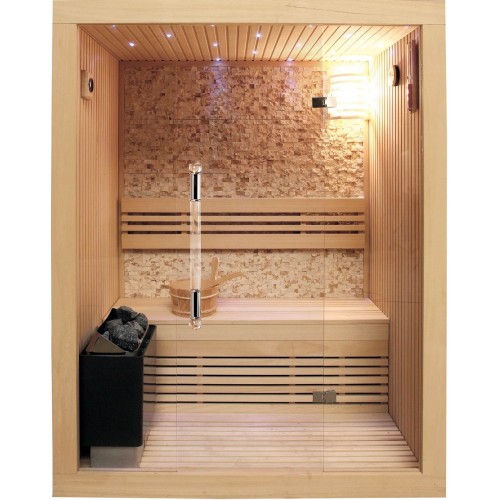Rumored Buzz on Traditional Sauna
Rumored Buzz on Traditional Sauna
Blog Article
The Facts About Traditional Sauna Uncovered
Table of ContentsTraditional Sauna Fundamentals ExplainedTraditional Sauna Can Be Fun For EveryoneA Biased View of Traditional SaunaAll about Traditional SaunaHow Traditional Sauna can Save You Time, Stress, and Money.
The majority of the weight lost in a sauna is water loss and is re-gained upon rehydrating. Without an uncertainty sauna can be an important component of a healthy and balanced weight loss program. To look at the differences between conventional and IR saunas, I will separate these into verifiable, theoretical, and produced distinctions.Thus, the hottest factor in the saunawhich is at the ceiling straight over the sauna heateris typically in between 185 and 190 F. Claims that a traditional sauna exceeds 200 F is simply not true and not appropriate for electric saunas sold in the United States. The temperature level for a far-infrared sauna is generally established between 120 and 140 F; nevertheless, unlike the conventional sauna, the goal in and IR area is not to attain a high temperature level.

When a standard sauna has been effectively heated, the sauna wall surfaces are warm, the air temperature level has achieved set temperature level and the rocks are incredibly heated. As an intriguing side note, the heated wall surfaces and the rocks are discharging far-infrared warm, incorporated with the heated air, to develop an "enveloping warmth".
All about Traditional Sauna
When the heat is attained, the components cycle on and off to maintain the heat. The majority of conventional sauna customers enjoy pouring water over the rocks to produce vapor to raise sauna humidity levels. The benefits of putting water over the rocks consist of: making the area more comfortable, dampening the nasal flows, and permitting the usage of aromatherapy by mixing vital oils with the water.

When the energy goes into the body, it triggers the body temperature to enhance and ultimately results in perspiration. In an infrared sauna it is necessary for the emitters/heaters to remain on almost constantly. Since there is no mass of rocks to retain heat, the sauna will certainly cool down if the emitters shut down.
Unknown Facts About Traditional Sauna
As mentioned over, the read sauna bather in an infrared room wishes to position himself before running emitters to get optimal benefit from the warmth. The home heating time for both areas can be extremely various, depending upon how the areas are used. For a traditional sauna, a bather must allow 30-40 mins for the room to accomplish a preferred temperature and to effectively pre-heat the rocks.

A well built sauna will commonly achieve a temperature of 150-160 F in regarding 30-40 mins. For hotter temperature levels, the area may need to heat for a longer period.
To some, 15 mins was "lost" while the infrared power warmed the wood panels rather than heating a body, while others find a pre-heated space to be a lot more comfy and think a raised beginning temperature level is essential to begin sweating. The length of advised use for each and every space is around the exact same (10-15 mins per session); nevertheless, because of the reduced air temperatures and the capability to feel the impacts of infrared heat much faster than a standard sauna, it is not unusual for a person to spend an overall of 20-30 minutes in an infrared sauna.
Not known Facts About Traditional Sauna

The ordinary expense per kWH of electricity in the united state is approximately $0.11, so a 4.5 kW heating system will certainly set you back around $.50 to compete one hour, if the heating system runs continuously for one hour. Commonly a sauna heating system will compete 75% of the very first hour and 50% of succeeding hours on given that the elements cycle once the established temperature level is attained.
A 2 person far-infrared space is you can check here normally literally moved here smaller sized than a traditional sauna, usually about 4' x 4' or smaller. The IR heater is commonly 1.5-1.7 kW making use of a 120 volt 15 amp plug-in solution. Since the area can be made use of faster than a sauna area, we will presume the space is made use of for to of an hour including warm up time.
There is a hardly ever reviewed distinction in the social experience between the two areas. While our culture has actually shed a few of the social advantage of the standard sauna experience, it can be very socially rewarding (Traditional Sauna). From family time in the sauna, to heart-felt conversations with loved ones, to sauna partiesthe standard sauna experience can cause intimate interacting socially
The Ultimate Guide To Traditional Sauna
A lot of higher end infrared spaces include colored light treatment, noise systems and full-glass fronts.
Report this page